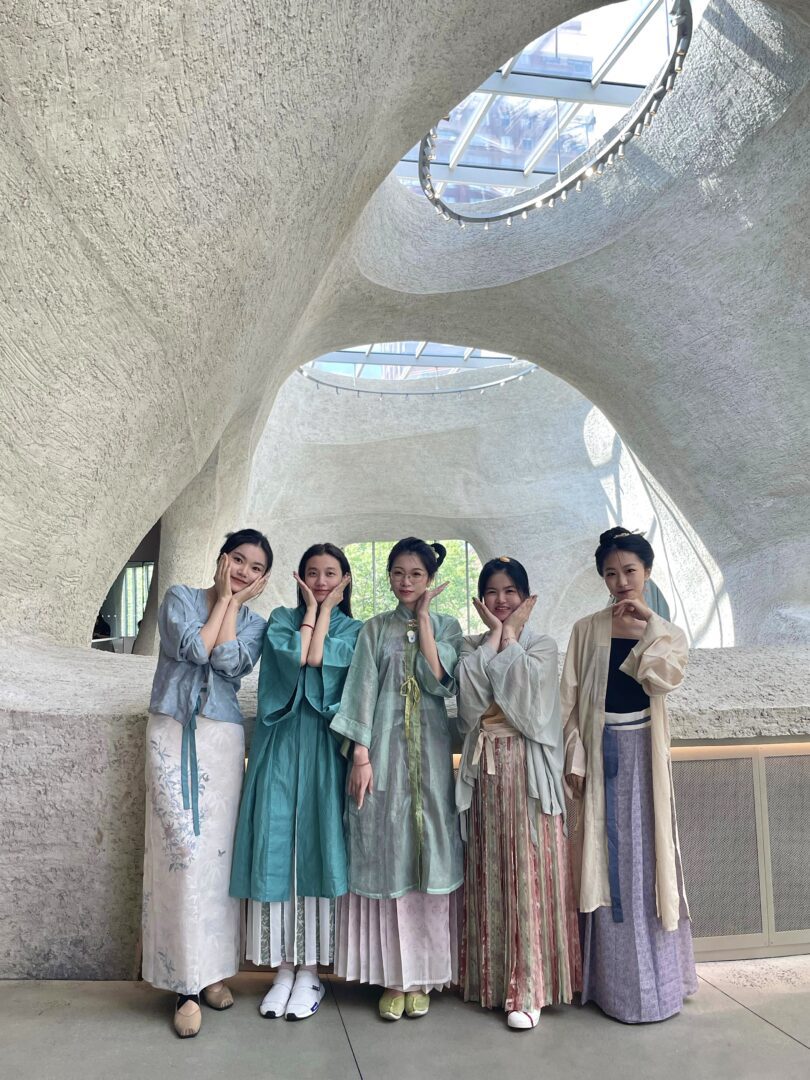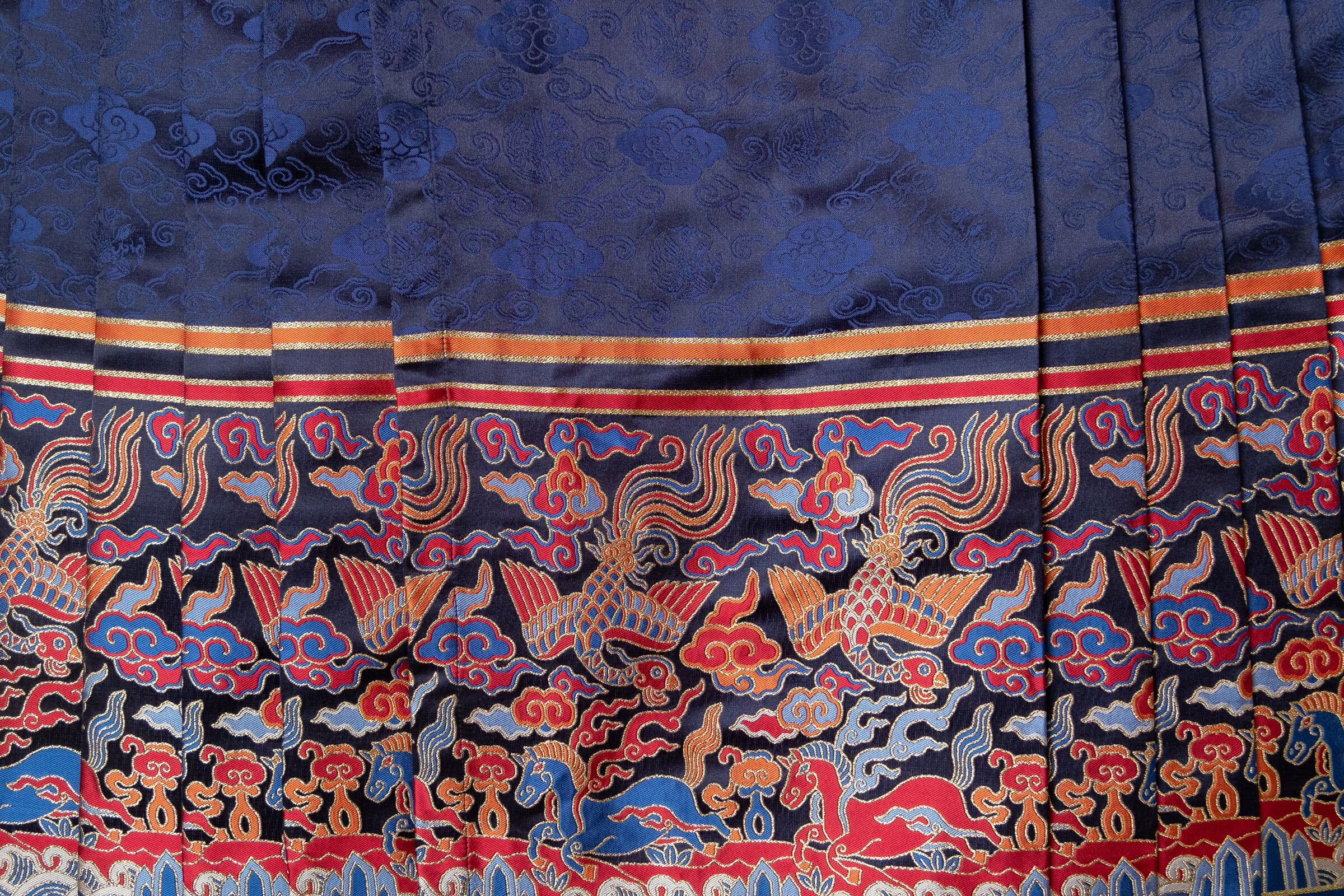
Today we wanted to highlight one of our very phenomenal interns and textile artists at Tatter: Yiqian Yao! Yiqian is a 24 year old student at FIT, currently studying for her Masters in Fashion and Textile Study. She is also one of the founding members of GRL Hanfu Society, an online organization which hosts events and posts videos of people wearing Hanfu in their daily lives. Read our conversation with Yiqian below:
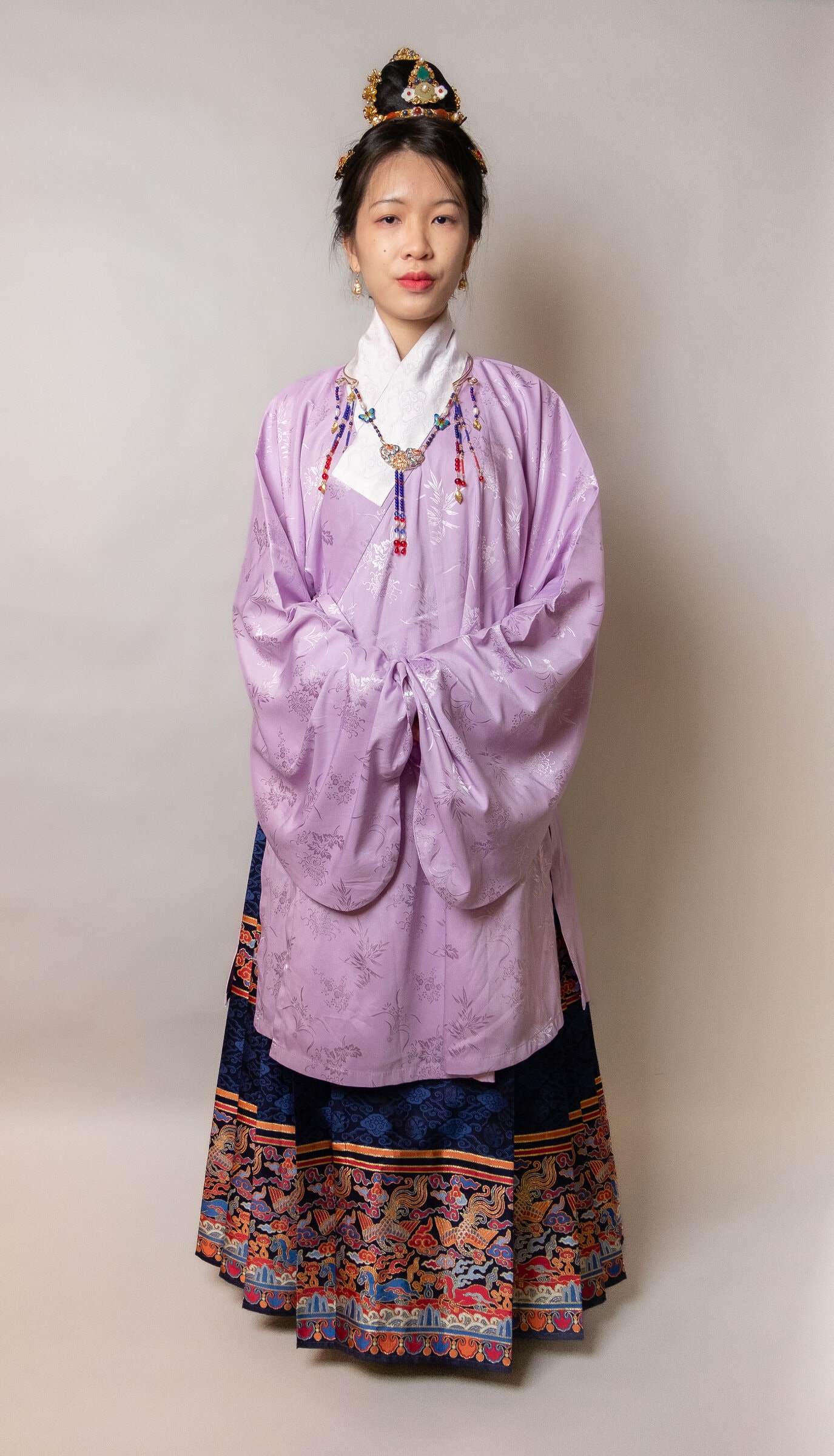
What is Hanfu?
Hanfu is the traditional Han Chinese dress that had been worn by the majority of Chinese for thousands of years. Many people only think of Qipao when mentioning Chinese dresses, but Hanfu is the dress with a longer history and represents the Chinese aesthetic. There are 56 ethnic groups in China today. The Han people are the majority and the other 55 are considered minorities. In modern times, before the Hanfu movement, every ethnic group had its own traditional dresses except the Han people.

Hanfu wearing and its integration in everyday life started to decay in the Qing dynasty (1636-1912) due to government policy. The emperor and royal in the Qing dynasty were Manchu people and forced Han people to change their dresses. After the Qing dynasty and the 20th century, traditional dresses were almost lost. About 20 years ago, the Han people, especially the younger generation, in China started to look back and find their own dresses. Non academic people did research and made the dresses by themselves and shared the information online so that more and more people could join this movement. The number of manufacturers increased and people could purchase Hanfu more easily. Other traditions, including cultural festivals, and crafts have gotten more attention and revival.
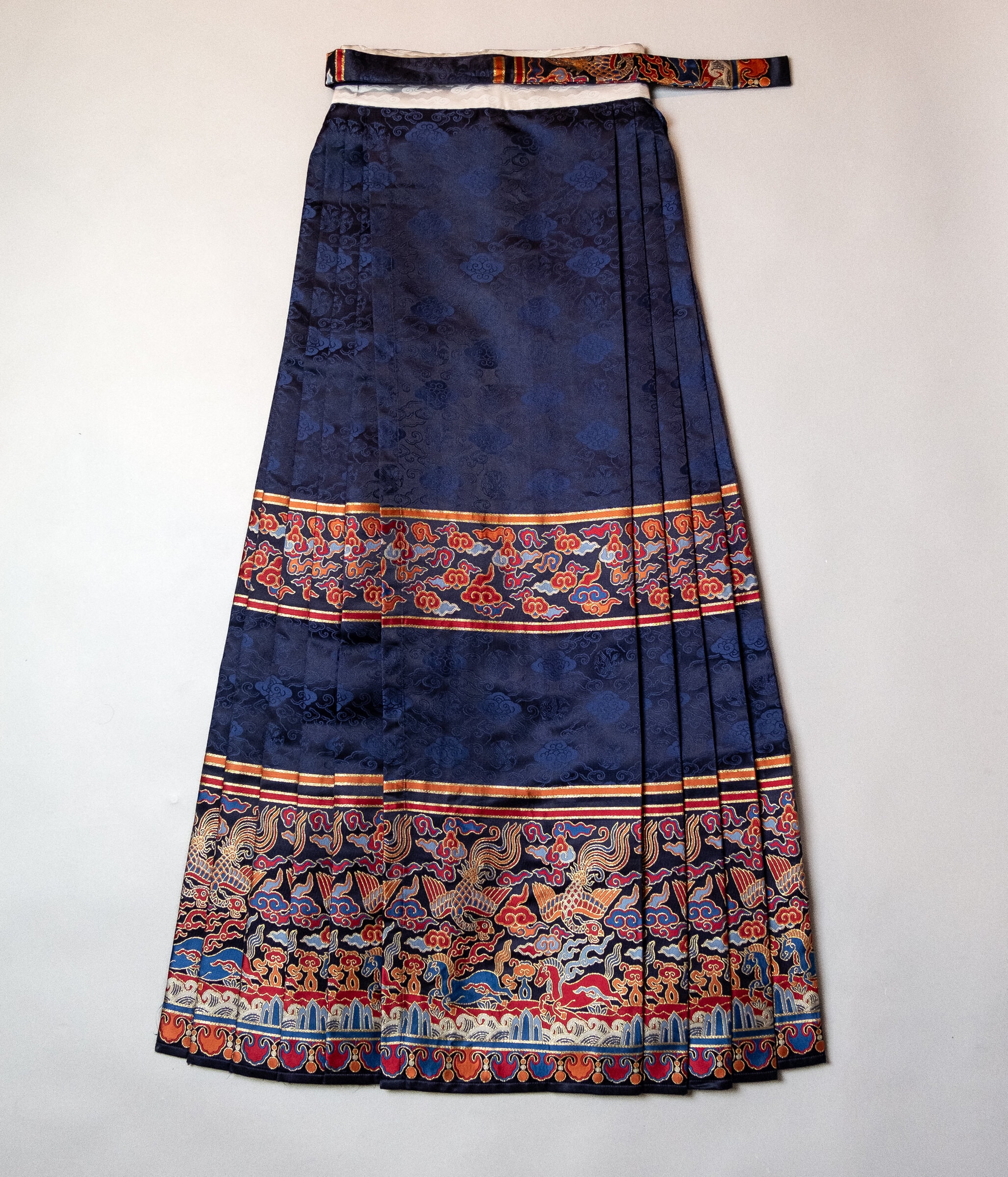
What characterizes Hanfu?
The design of Hanfu can be varied, but the core of Hanfu is the construction pattern. The fabrics were continuous across the shoulder and sewn at the center of the front and back, causing no shoulder seam but a “center seam” on the front and back. The finished garment can be laid flat. The fabric can be in a modern design for daily life or in traditional motifs and techniques such as gold weaving for formal occasions and festivals.
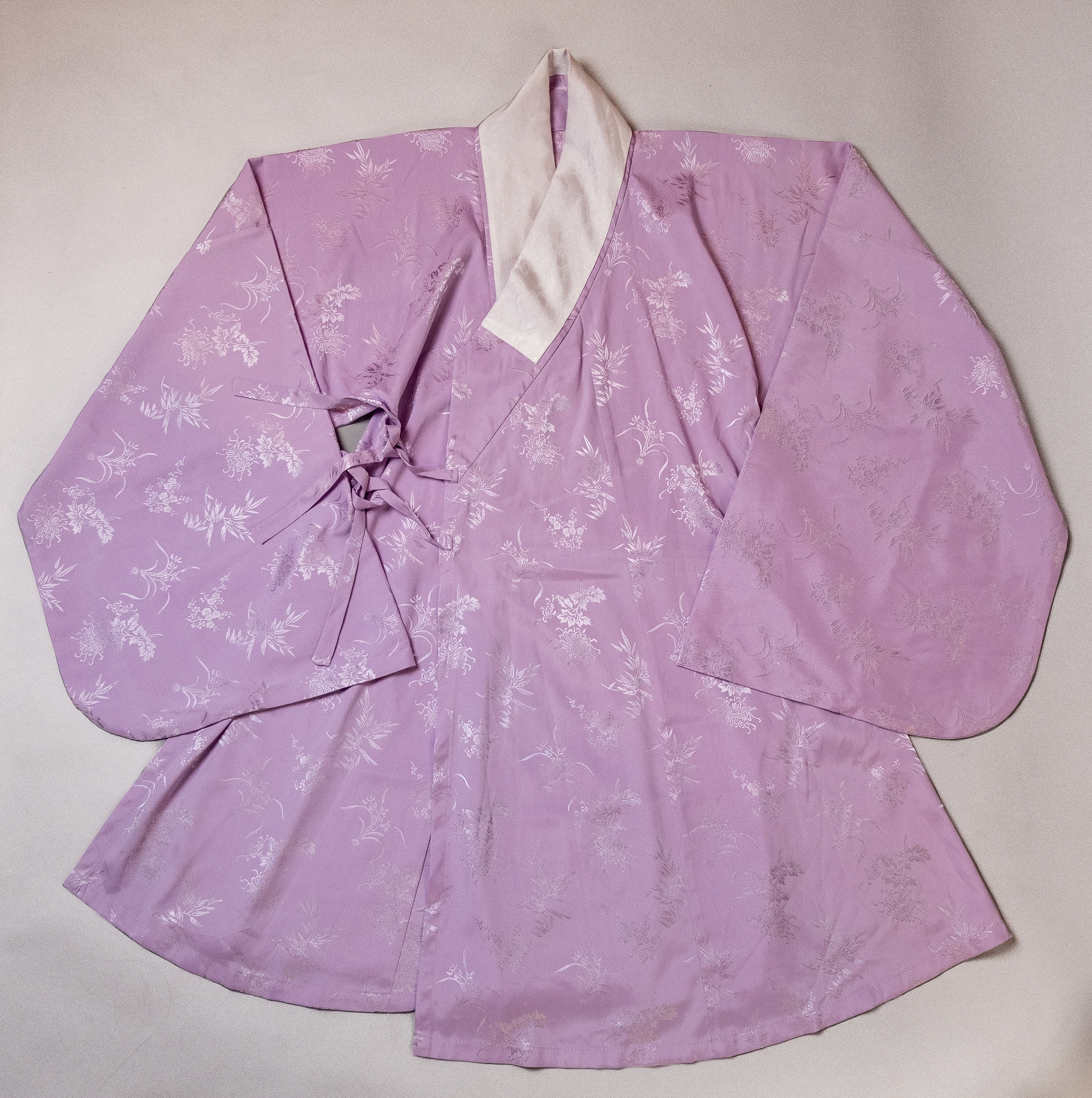
Why did you found GRL Hanfu?
There are many people in NYC wearing Hanfu and putting efforts to promote the culture. I am one of them. I wear Hanfu in my daily life and host gatherings/events and am one of the founding members of GRL Hanfu Society. GRL stands for Gurenlai 故人来, meaning bringing people with the same interests together– you can find us on instagram at @grlhanfu. At first we were established as the Long Island Hanfu Society but we have since transformed into an online organization now where we host online events and post videos. The most significant videos are the Annual Hanfu Relay series. Each year we have a different topic and ask people from the world to participate in the video, in order to encourage people to wear Hanfu and do different activities.
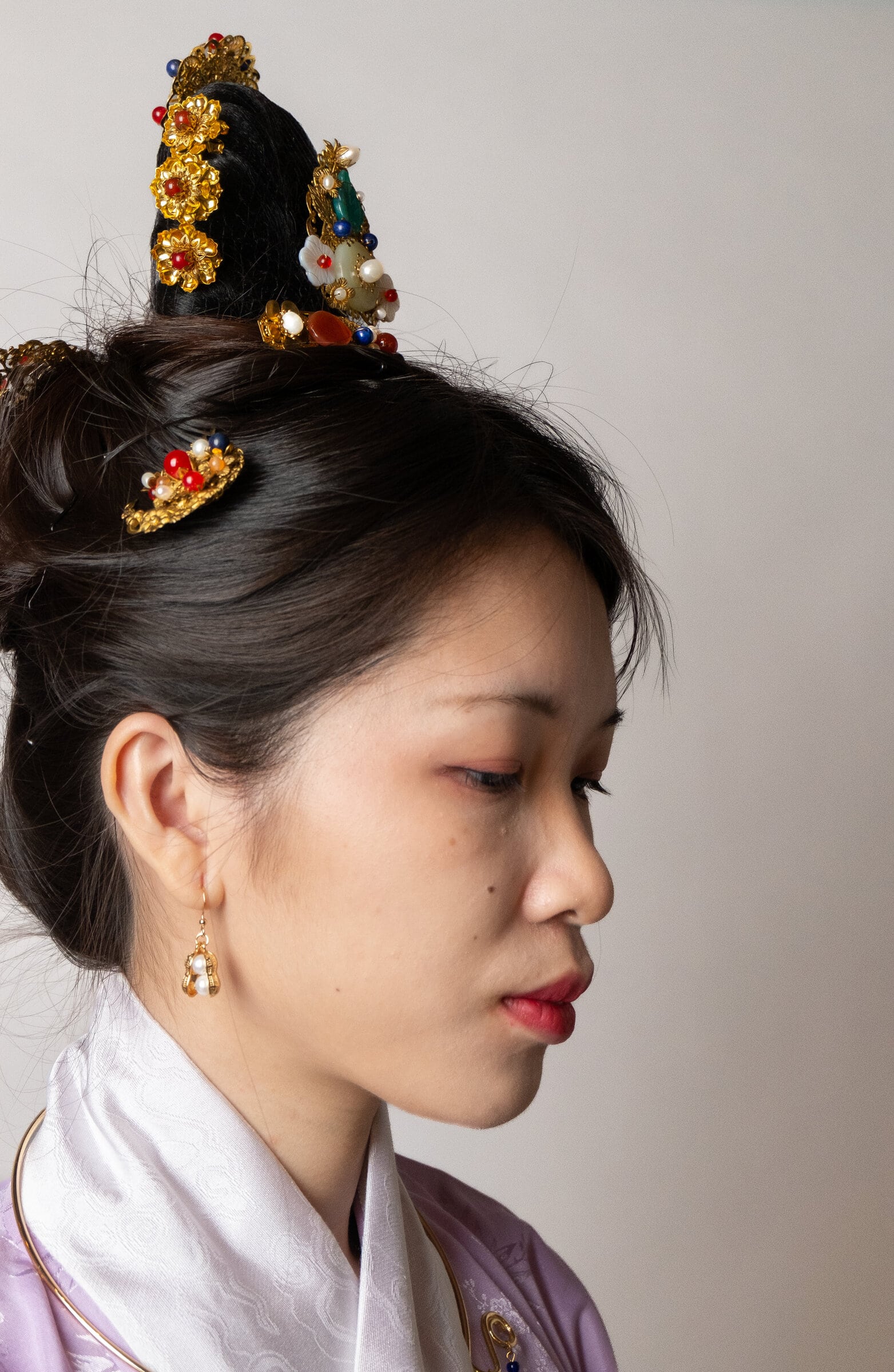
When did you start wearing it more frequently in your everyday life
I learned about the concept of Hanfu in 2013. At that time, Hanfu was still a very small community, and there was not much choice to purchase Hanfu. In 2014, I bought my first set of Hanfu, and tried to wear it out. As time has passed, Hanfu is continuously developing due to the movement, and I got more and more beautiful designs to purchase, and now I have Hanfu with different designs for different occasions, both daily life and formal. I keep wearing them out because I believe the most important sign of the revival of a costume is that people are all wearing it. There is not an exact time period for me to wear it more frequently. I treat it as a normal dress and fill my wardrobe with it.
